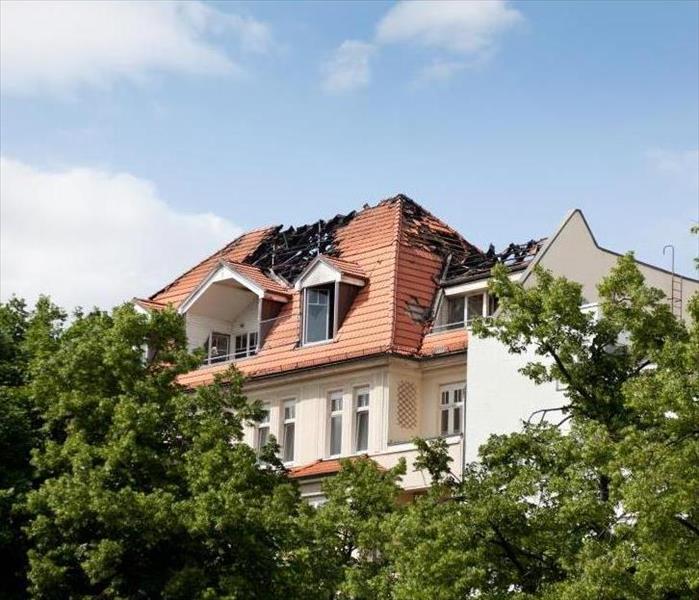What Can Simplify Fire Restoration In My Randolph Home?
6/21/2020 (Permalink)
 Contact the professionals immediately when facing fire damage in your home. Team SERVPRO will assess and remediate.
Contact the professionals immediately when facing fire damage in your home. Team SERVPRO will assess and remediate.
SERVPRO Helps Organize the Restoration Process Guaranteeing Better or Faster Outcomes
After a fire affects your home, restoration is necessary to make it safe or comfortable for occupation. Based on the severity of the fire, the restoration process in your Randolph home can be challenging or take time to complete. Finding ways to simplify the exercise is, therefore, essential. Alternatively, you can also involve a team of professionals such as SERVPRO to help with the restoration.
What is unique about fire restoration done by professionals in Randolph?
Although professionals rely on sophisticated fire restoration methods in Randolph, there are many simple things they do that help complete the process conveniently. They include:
- Deeper understanding and choice of cleaning products
- Appropriate use of cleaning methods
- Preventing secondary problems
- Testing before starting the restoration
A significant chunk of the restoration work in Randolph, after a fire incident, involves cleaning surfaces and contents to remove soot, tar, and other smoke residues. Apart from covering vast areas of your property, the soils may adhere to some materials making the removal process challenging. One approach that simplifies cleanup is using products that counter the physical traits of the soil. Our SERVPRO technicians rely on concepts such as "like dissolves like" to choose the right cleaning product.
"Like dissolves like," how does that help?
The soils left on surfaces and materials may have different shades of color ranging from yellow, grey, brown, or black. However, the differences go beyond the visual representation because the soils can be:
- Hydrophilic
- Hydrophobic
- Lipophilic
- Lipophobic
Hydrophilic residues readily dissolve in water, while lipophilic ones require oil-based cleaning products. Hydrophobic and lipophobic soils do not dissolve in water or oil-based cleaning products, respectively. Our SERVPRO technicians perform some tests at the loss area, establishing the qualities of the soils that we need to remove, thus ensuring the cleaning products we pick work faster.
Which tests help ease the restoration of fire-damaged valuables?
Tests that help differentiate residue types and identify the physical traits of the affected materials are necessary to establish whether restoration is possible as well as the best approaches to execute such renovation. Tests can vary from something as easy as running a cleaning sponge along wall surfaces to establish residue spread patterns, to other sophisticated tests that established the type of material or level of deterioration. When restoring upholstery items and carpet, such tests are crucial because apart from helping ease the restoration process, they also prevent the problem from worsening. Some typical tests include:
- Fiber type test
- Colorfastness test
- Level of soiling test
- Stain resistance test
Does the choice of a cleaning method interfere with the restoration process?
Even after identifying the soils, and the physical traits of the materials they affect, choosing the wrong cleaning procedure can lead to challenges. One aspect of restorative cleaning is the agitation of soiled surfaces or materials. Several methods of agitation can help remove soils, including the use of wiping cloths, brushes, air pressure, and water pressure. For loose soils on porous materials, our technicians use air pressure agitation, such as contact vacuuming, which ensures that the residues do not penetrate deeper into the material. For items that require immersion, we can use sophisticated forms of agitation such as ultrasonic cleaning, which utilizes sound waves to create and implode millions of bubbles, which remove soils conveniently.
Sometimes the processes meant to restore affected materials can cause additional damages or even ruin the item permanently. When cleaning carpets or upholstery, there is a possibility of water stains forming due to over-wetting or drying the materials slowly. To control stains from over-wetting, our technicians use peroxide water stain removers to reverse the damage. Slow drying is rarely a problem since we manage the drying process by setting up air movers and dehumidifiers close to the wet items to expedite drying.
Can decluttering help improve the restoration process?
In most cases, properties are disorganized or full of clutter after fire damage, which can delay the restoration processes. Removing some materials helps create room to maneuver. Our SERVPRO technicians can help move your contents to an offsite facility for storage or specialized cleaning, which helps declutter the loss site and safeguard your valuables.
We use different approaches to make such move-outs convenient, including packing items by room and separating wet and dry items. Such precautions also help improve the outcome of the restoration process. For instance, we can prevent damage transfer by separating wet and dry items. Packing items from the same areas also helps in locating items with similar damage when cleaning up or performing other restoration processes.
SERVPRO of Southwest Morris County has various resources that can help in the restoration of fire-damaged properties in Mendham, Mendham Boro, and Chester. Call us at (973) 895-5000. We’re Faster To Any Size Disaster.






 24/7 Emergency Service
24/7 Emergency Service